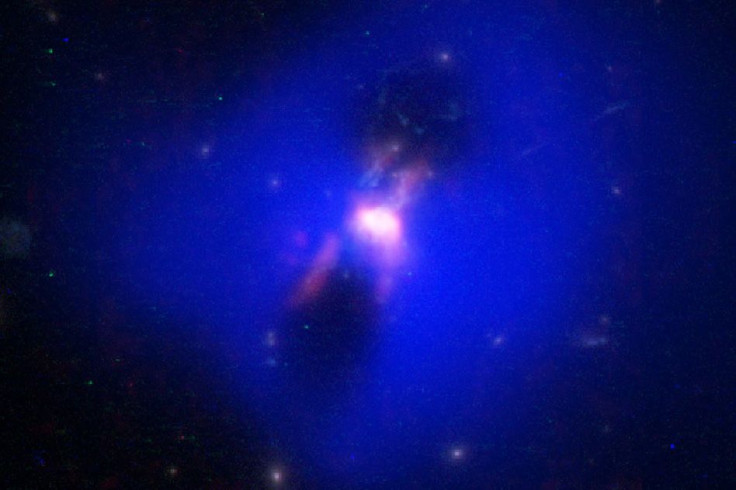How Do Stars Form? Black Hole Producing Star-Making Cold Gas In A Prolific Galaxy 5.7 Billion Light-Years Away

Black holes are more than just hungry voids that gobble up anything and everything they come across. They routinely create hot plasma jets and gas bubbles that are thought to prevent the cooling of galaxies and regulate the formation of stars, which requires cold hydrogen gas as a building block.
This phenomenon is considered responsible for the small number of new stars most galaxies in the known universe produce every year. Which is why astronomers were trying to understand how the massive central galaxy of the Phoenix cluster — a gigantic accumulation of about 1,000 galaxies 5.7 billion light-years away — was producing about 1,000 new stars every year.
A study published Tuesday in the Astrophysical Journal may have the answer. Scientists from the Massachusetts Institute of Technology, the University of Cambridge and some other international institutions investigating this “extreme stellar output” observed jets of hot plasma and gas bubbles (at about 10 million degrees) blasting out from the galaxy’s central black hole. These jets, which extend for 20,000 light-years from the black hole, cool in the distance before raining back on the black hole, leading to the formation of stars.
“We have thought the role of black hole jets and bubbles was to regulate star formation and to keep cooling from happening. We kind of thought they were one-trick ponies, but now we see they can actually help cooling, and it’s not such a cut-and-dried picture,” Michael McDonald, one of the co-authors of the study and assistant professor of physics in MIT’s Kavli Institute for Astrophysics and Space Research, said in a statement Tuesday.
The team of researchers used measurements of radio emissions, taken by the Atacama Large Millimeter Array (ALMA) in the desert of northern Chile, starting in 2015, to detect and map signs of cold gas in the Phoenix cluster. The astronomers looked for signs of carbon monoxide, which is present in the universe wherever there is cold hydrogen gas. The resultant cold hydrogen map for the region near the center of the Phoenix cluster threw up a surprise.
“You would expect to see a knot of cold gas at the center, where star formation happens. But we saw these giant filaments of cold gas that extend 20,000 light years from the central black hole, beyond the central galaxy itself. It’s kind of beautiful to see,” McDonald said.
The cold hydrogen gas map was superimposed on a map of the cluster’s hot gas, which was generated using observations from NASA’s Chandra X-ray Observatory. The astronomers found a “perfect spatial correspondence” between the two.
Jets of plasma stream out of the black hole close to the speed of light, and some distance away, they inflate into giant bubbles of hot gas. Researchers think these bubbles drag trails of relatively cooler gas (about 1 million degrees), and as the bubbles detach from the jets and drift farther out into the galaxy, the cooler gas trails become even cooler, becoming extremely cold (just slight above absolute zero), and rain back on the black hole as fuel for star formation.
Helen Russell from the University of Cambridge was the lead author of the study.
© Copyright IBTimes 2025. All rights reserved.





















